Example: Using Global Filter for Handling Loading Conditions
This example will explain how to handle different loading conditions in the main window in ShipWeight. In the following project we have defined Lightship with margin items and Loads items, which together make up the total Displacement for the project:
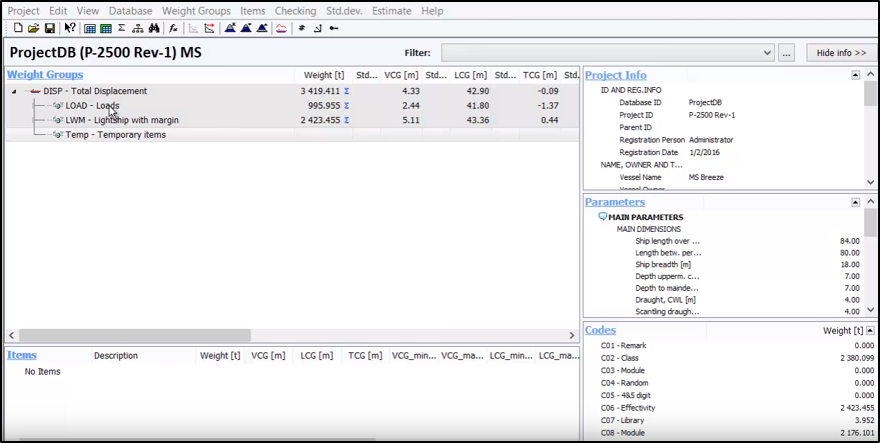
Now, if we expand the Lightship, we can notice this is made up by the typical summary of the 1 through 700 digit SWBS numbers:
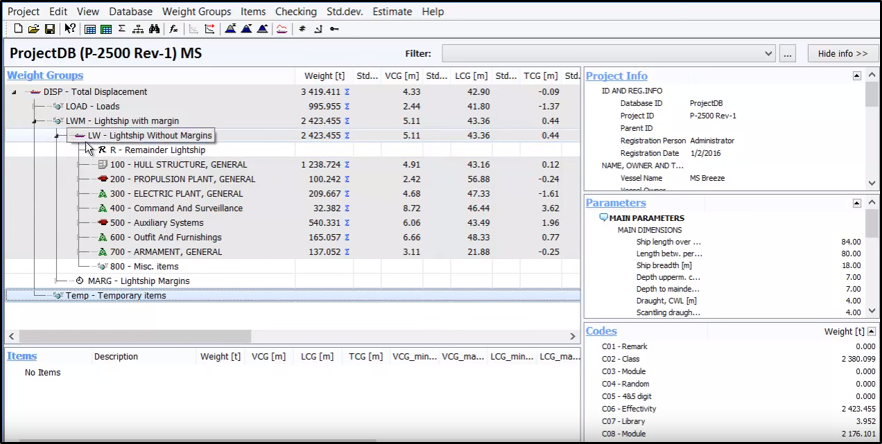
If we expand the load group, we will see that the load is made up by summarizing A loads, C loads and F loads:
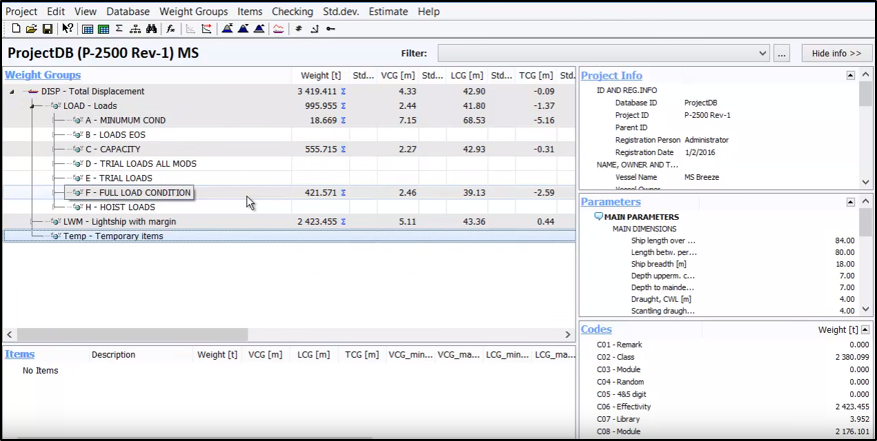
This is just a summary of all loading conditions, and thus the total displacement in this case which is the summary of the Loads and the Lightship doesn’t make sense, it does not represents one particular loading condition.
So, now we will apply global filters to set up various loading conditions, that would be meaningful, in the main window and also in running other functions in ShipWeight like weight distribution curve, gyradius function, and so forth.
We will create loading conditions using the global filter. The global filter setting can be seen in the upper right side:
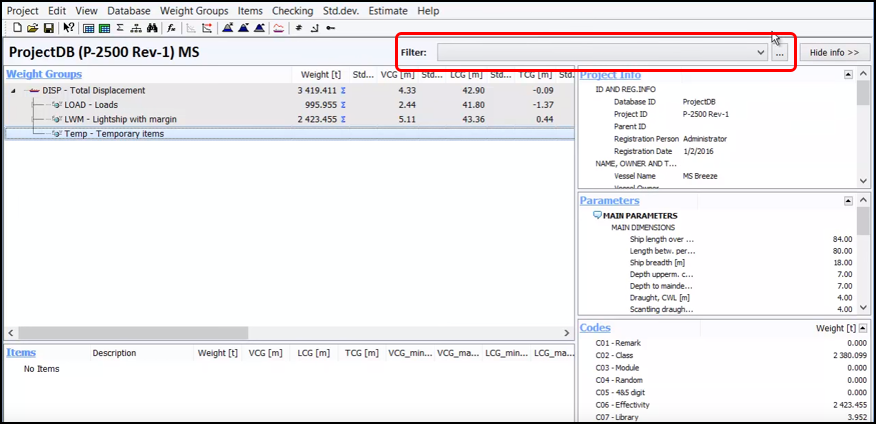
Click the browse button (to the right of the Filter droplist). The Filter window will open:
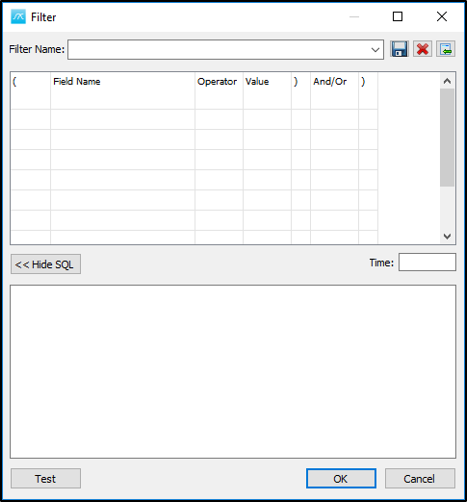
Now we will create global filters for our various loading conditions. First we will create a lightship condition for the lightship weight. Start by giving a filter name, and create the actual filter as following:
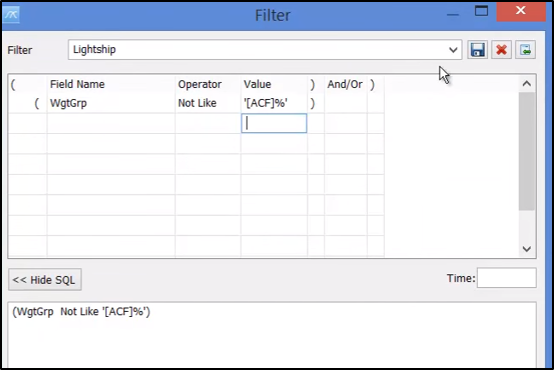
Global filter setup:
(WgtGrp Not Like ‘[ACF]%’)
meaning: SWBS groups should not start with A, C, or F
Then press the Save button.
In the window below we can see the global filter was created:
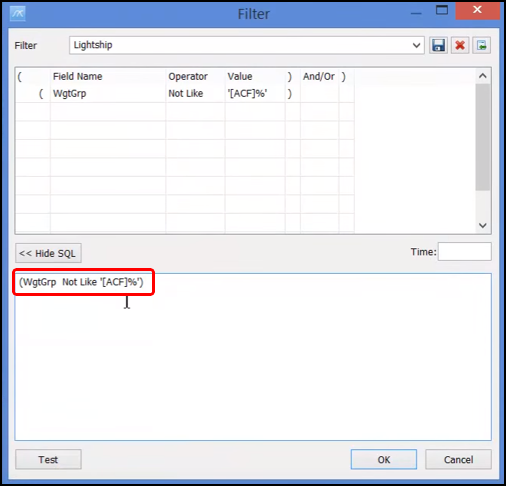
This filter means that we should not include weight groups that starts either with ACF and weight groups that starts with this having other letters or numbers after these letters (this is what the percentage % represents).
Now, we will create a filter for the full load condition:
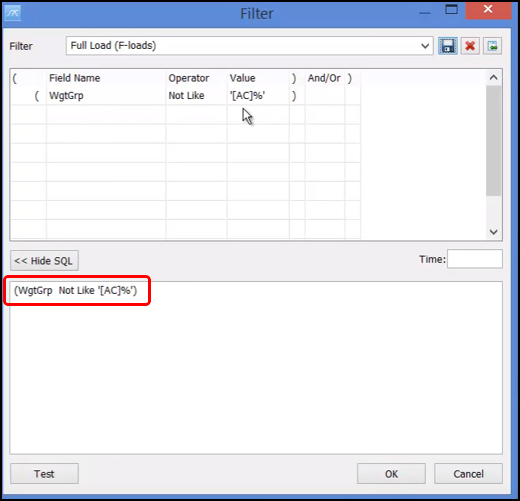
And also define minimum load filter:
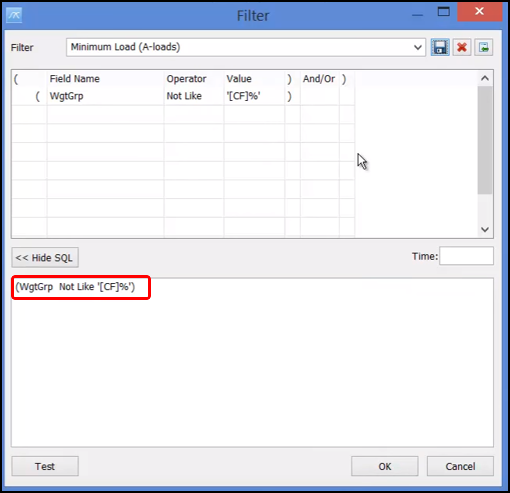
And finally the Capacity loads filter:
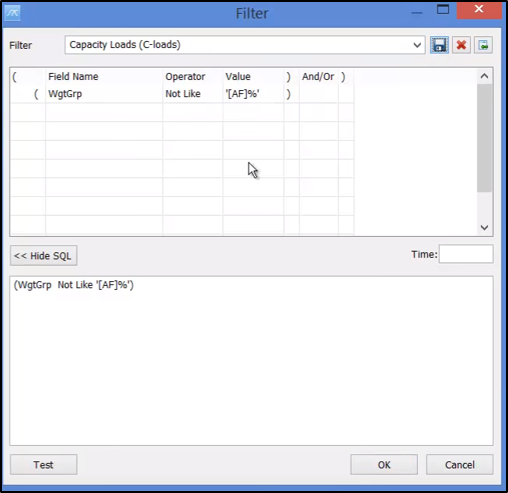
So now, all the needed filters are created and available in the dropdown list:
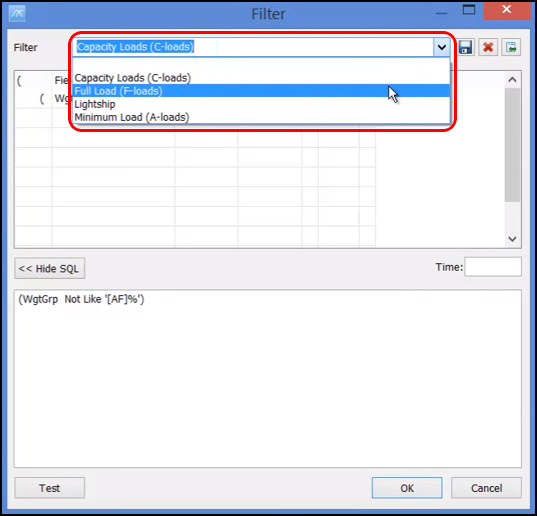
Select from the list, the Lightship filter and then press OK. It will be visible in the Filter area:
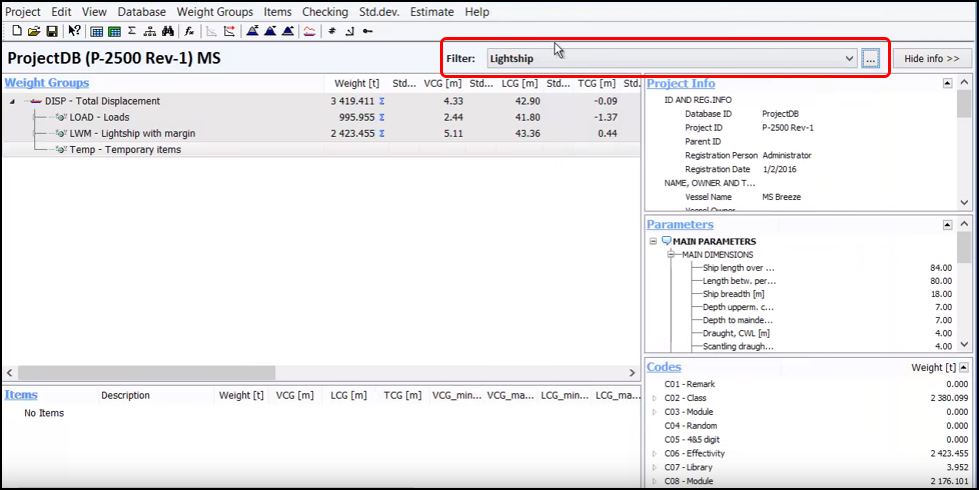
Starting with the lightship filter, it will remove all the other loads, and we are left only with the lightship:
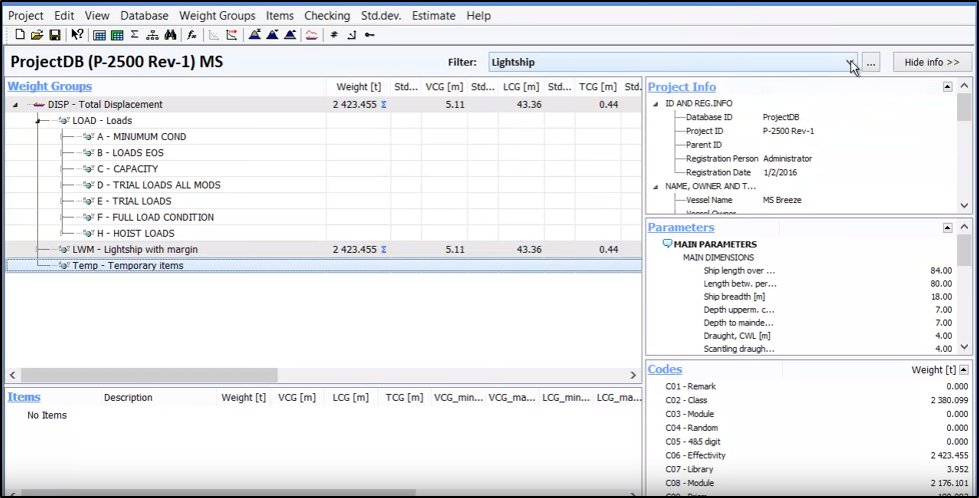
Now if we pick from the filter’s list the Full load, it will show in the tree the lightship and also the full loads values:
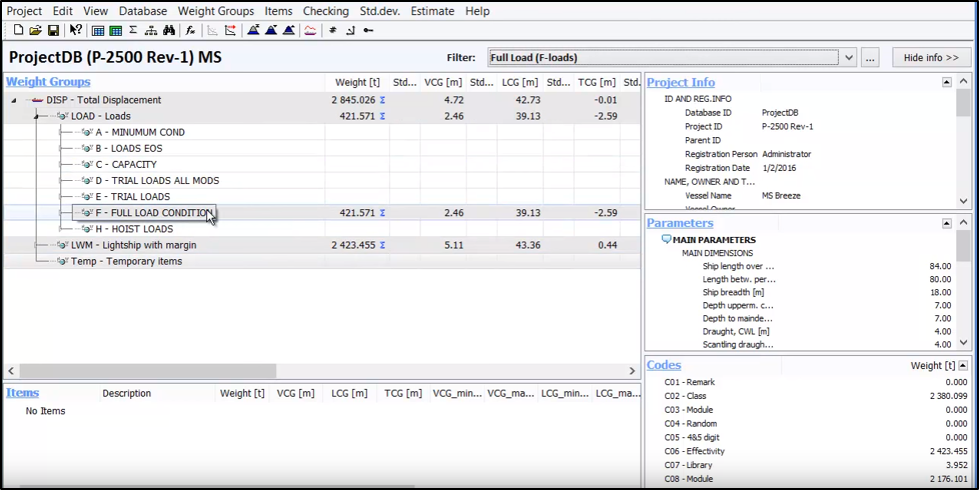
We can also check Minimum Load filter:
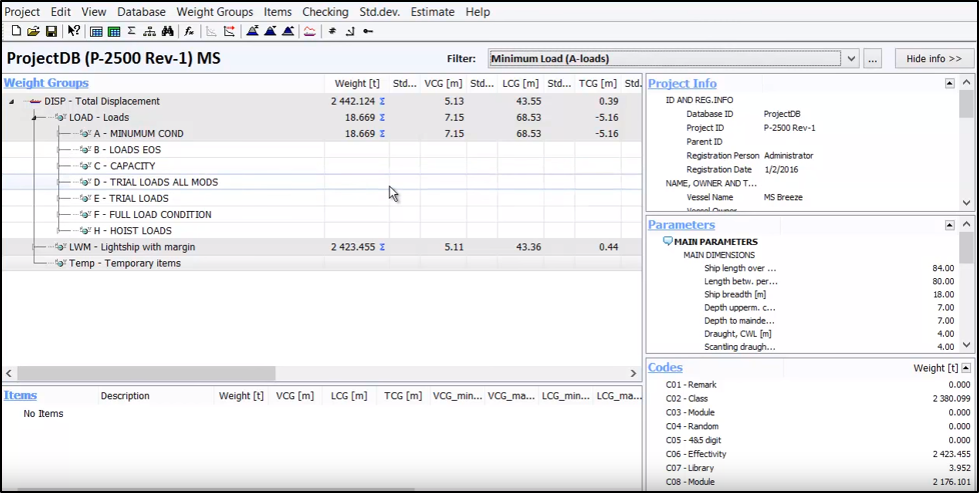
All the filters are global, meaning that they will be valid, not only for the main screen, but also for the item window, without the details, now we only see A Loads and Lightship items, and also when running weight distribution curve, gyradius, etc. then these functions in the ShipWeight application can now be run for these global filter settings.